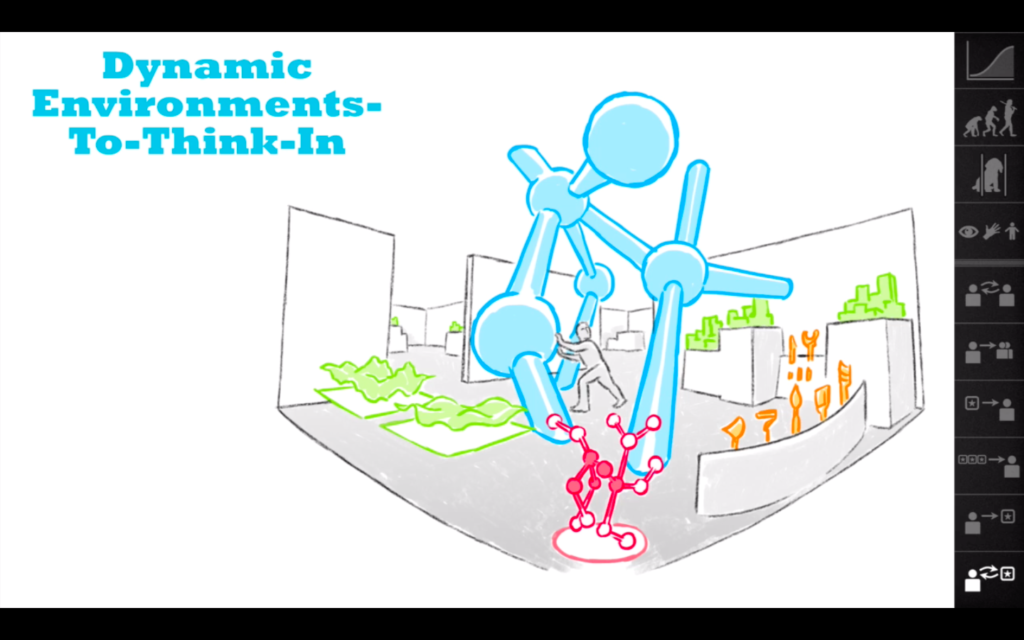As Bret Victor mentioned in his talk, The Humane Representation of Thought, “the powerful medium is what powerful representations to be spread,” the medium is what determines how and to what extent the representation can be executed to its full potential.
I think that the medium of virtual reality allows the user to get indulged in an environment that the user cannot or is difficult to get exposed to. For example, the medium of virtual reality can allow an ordinary person to feel as if he/she is walking on the surface of the moon, which only skilled and selected astronauts can do. In fact, virtual reality allows the user to be an active participant rather than a passive observant. What I mean by this is that with the use of the hand controllers, the user has the ability to maneuver what is inside the virtual reality. From this essence of virtual reality, I think that a form of representation that I feel would be suited for the medium of virtual reality would be “thinking,” more specifically creating “dynamic environments-to-think-in.”

In a sense, the medium of virtual reality “treat[s] the human beings as sacred” (Victor). Virtual reality can give superpowers to the user by giving the user agency to see and alter the virtual world they are in. Let’s say that the user is placed in a lone island and the user can see the setting through the headset. This user, if given the option, can perhaps light a fire or cook food, using the controllers at the deserted island. More realistically speaking, the user can craft his own image of his house in his virtual space, which he can use it to execute his thoughts, and also come up with new ideas. Such interface would trigger different parts of the users’ brain and allow the user to think in a different manner. Because thoughts and ideas tend to arise when one changes his environment, the medium of virtual reality would be effective in providing that alternate space.